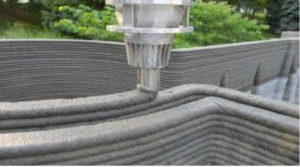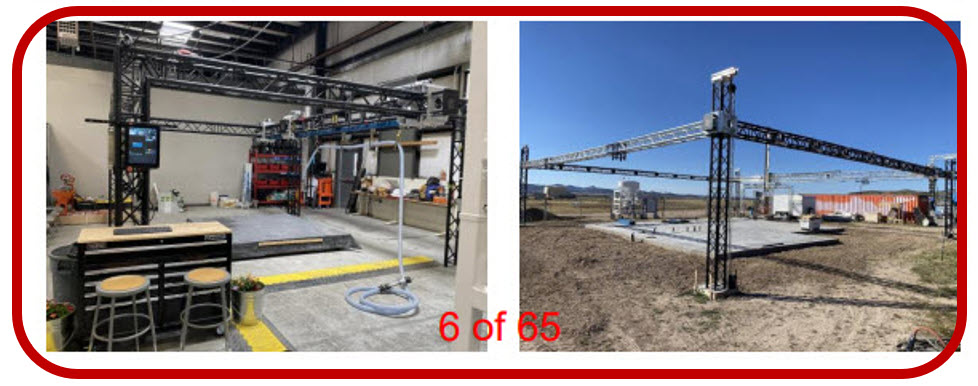The College has pivoted toward manufactured homes, travel trailers and the purchase of a 41 acre church camp in its quest to provide low cost housing assistance for faculty, staff, and students
 Recall the decision made over three years ago, January 27, 2020, when the District Governing Board approved the Community College executives investing around a half a million dollars in two 3D concrete home printers. At the time, the printers were touted by Community College executives as capable of constructing the foundation, interior, and exterior walls of a medium-sized home within three to five days. For example, in its press release of January 27, 2020, the Community College said in part:
Recall the decision made over three years ago, January 27, 2020, when the District Governing Board approved the Community College executives investing around a half a million dollars in two 3D concrete home printers. At the time, the printers were touted by Community College executives as capable of constructing the foundation, interior, and exterior walls of a medium-sized home within three to five days. For example, in its press release of January 27, 2020, the Community College said in part:
“This new process would enhance several trades and early estimates suggest the printers can have the foundation, interior, and exterior walls completed for a medium-sized home in 3-5 days. After roofing, electrical, plumbing, and other services are installed, it is estimated that these 3D printed homes will help alleviate Yavapai County’s attainable housing shortage.” . . .
“We believe this can be a part of the solution to our long-standing attainable housing crisis in Yavapai County,” said Dr. Lisa Rhine, Yavapai College President. “The emerging opportunities that 3D printing provides are quite remarkable and we want to bring this innovative technology to help our communities in need.” . . .
Subsequently, the College acquired the 3D printers. However, they proved unsuitable for their intended purpose, as later openly acknowledged by Yavapai Community College executives. Consequently, they were essentially discarded, prompting the Community College staff to embark on a challenging and time-consuming journey to develop and construct their own 3D printers. (Cost estimates unknown.)
In January 2022, the first class on how to use these machines was announced. However, despite the enormous time-consuming staff effort and large expenditure of funds, the total enrollment in the class since 2022 is reportedly as of the last semester very small.
Now, County residents have learned from the presentation to the District Governing Board at its April 21, 2024 meeting that the current 3D printers are not equipped to print homes to meet the needs of the Community College staff and students. Apparently, it has become clear they cannot print the type of concrete homes it was anticipated they could back in 2020. Nor can they be printed in 3-5 days.
The College is now turning to alternative housing such as the recent purchase of a 41 acre church camp. It is also beginning to purchase travel trailers and prefabricated homes.
Surprisingly, despite the significant previous investment and failures, it is believed that College administrators may have been quietly considering proposing to the Governing Board a purchase of a new 3D printer or printers with a potential additional investment of $600 thousand. Fortunately, such an expenditure is not included in the proposed 2024-25 academic year budget.
The College’s arduous journey with 3D concrete home printing technology underscores the importance of careful pre-planning and skeptical evaluation of major investments by the executives in charge of higher education at the Community College, especially when it comes to emerging technologies. It also serves as a valuable lesson to the District Governing Board when considering approving similar ventures and expenditures.
Click here to go to the video clip of Dr. Clint Ewell explaining the status of the College’s 3D printer project to the Governing Board at the April meeting.


